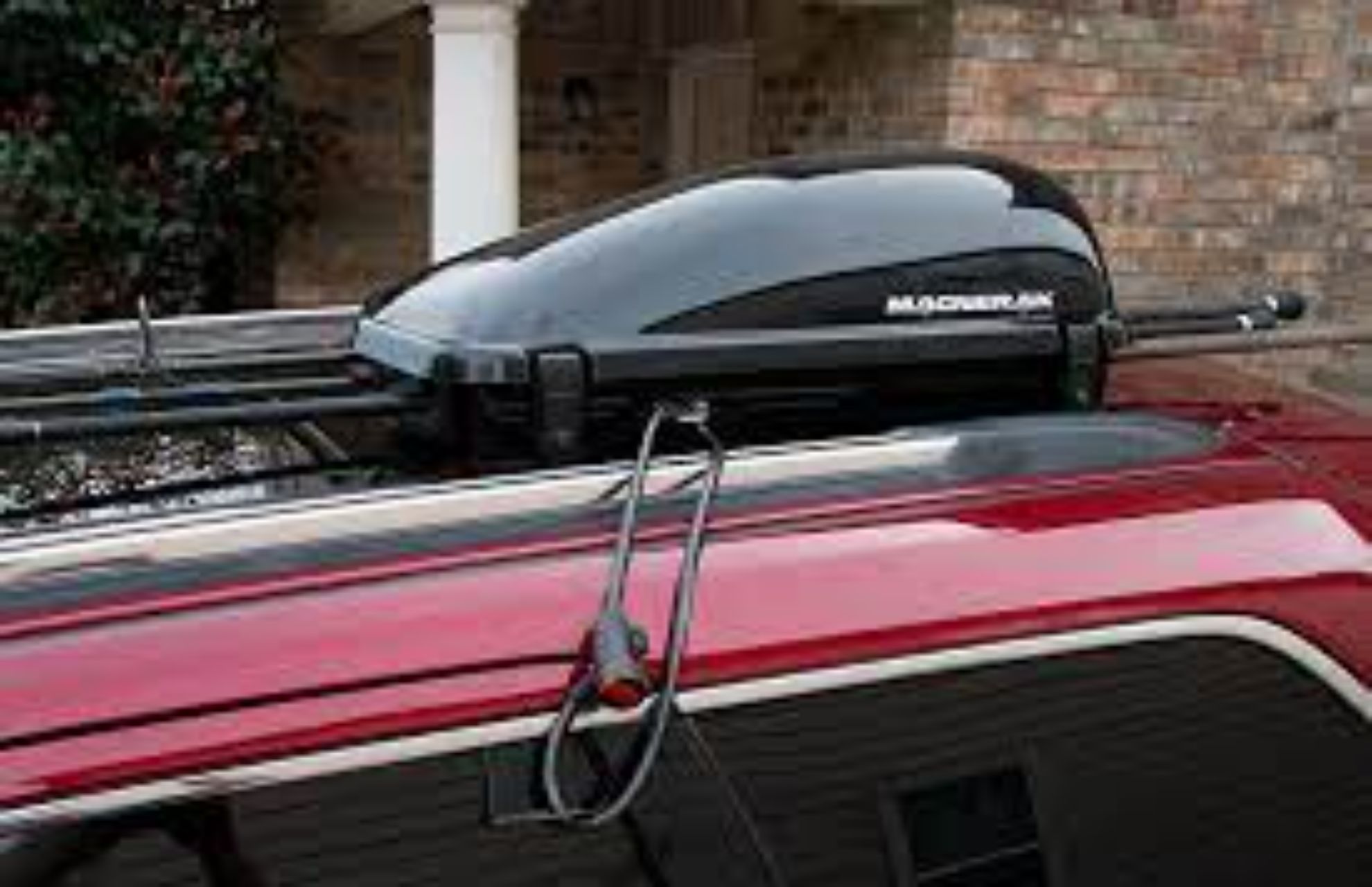
How To Lock Fishing Reels On Your Car Roof?
By installing a roof-top rod locker, you can transport your fly rods that are set up and prepared to fish as soon as you get to the water. Reels that are fixed to the roof are less likely to break while being transported because they are out of the way of people, dogs, and car doors. Please read this article carefully if you want to learn how to lock fishing reels on your car roof.
Tools You Need To Lock Fishing Reels On Your Car Roof
- Drill
- Assorted bits
- 1½-inch hole saw
- Circular saws
- File or sandpaper
- Miter box and saw
- Tape measure and ruler
Step-by-step Guide On Locking Fishing Reels On Your Car Roof
Step 1
Lay out where the holes for the rod tubes will be on the toolbox to start. To make marking the toolbox’s bottom easier, tape it with masking tape. Then, position the capless trap adapters in the toolbox’s approximate locations.
Step 2
Make holes where they are indicated on the box bottom. Pilot holes should come first, then the hole saw. Slowly move while applying light pressure. By switching the drill to reverse, I was able to create a cleaner hole, but you should be aware that this will cause the nut holding the blade to loosen.
Once the 1 1/2-inch holes have been drilled, smooth the edges with a round file or sandpaper wrapped around a dowel.
Step 3
Connect the holes on the trap adapters. Each adapter should have a silicone sealant bead applied around the threaded portion before being inserted into the hole. The tub-drain gasket should be placed on the back (interior) side and fastened with the nut after being seated.
Step 4

Cut the PVC pipes to the right length for your rods, then fill them with foam insulation to provide cushioning for your rods on bumpy roads. To make room for the rod handle and large stripper guide, remove insulation from the first 8 inches of the end that will be inserted into the toolbox.
At the opposite end, flush with the pipe, and trim the insult. If your rod has large guides running the length of it, you can skip this step entirely.
Step 5
You need to prepare the bracket bases before everything is assembled and glued. In order to fit my roof rack’s crossbars, I used a piece of 3/4-inch plywood that was as long as the toolbox and had been ripped down to 2 inches in width.
To prevent chipping the wood, use a circular saw and fine-tooth blade to make your cuts. To accommodate the T-bolts I used to secure the carrier to the roof rack, I drilled holes into the bases at each end.
Instead of drilling holes, you could use U-bolt clamps to attach the bases to the crossbars of a rack. To shield it from the elements, paint the plywood with exterior paint.
Tips For Locking Fishing Reels On Your Car Roof
You can always go out and buy a rear vehicle rack or roof rack designed specifically for fishing rods if you don’t mind spending a little money on the transportation of your rod and reel.
Wide, two-piece racks with magnets that cling firmly to your roof are available. You can transport up to eight or ten poles safely because the interior foam padding clamps down on the rods.
There are smaller variations that can support three rods vertically. Although they also utilize a magnet and foam, they are attached to the back of your car, making them more appropriate for SUVs. Price varies but figures on paying $10 or so for each rod they hold.
You can attach the rods on your own to your built-in roof rack if you don’t want to spend any more money. In either scenario, it’s crucial to take away your synthetic lures.
If they are not tied on properly, they may fly off or get battered by the wind. If it’s just a hook, it should be safe to leave it on and fasten it to one of the rod eyeholes. If not, take out the lure and tie the fishing line’s end to an eyehole.
Using a small bungee below the reel, tightly bundle any additional rods you may have together. Place it on the side of the rack with the handle end facing forward.
After that, attach the rod bundle to the roof rack with two bungees—one for the front and one for the back. Verify that they are snug without bending the rods.
The bungee can be replaced with rope or cord if you are confident in your ability to tie knots. If in doubt, just go with the bungee; this will get you out on the lake in no time.


